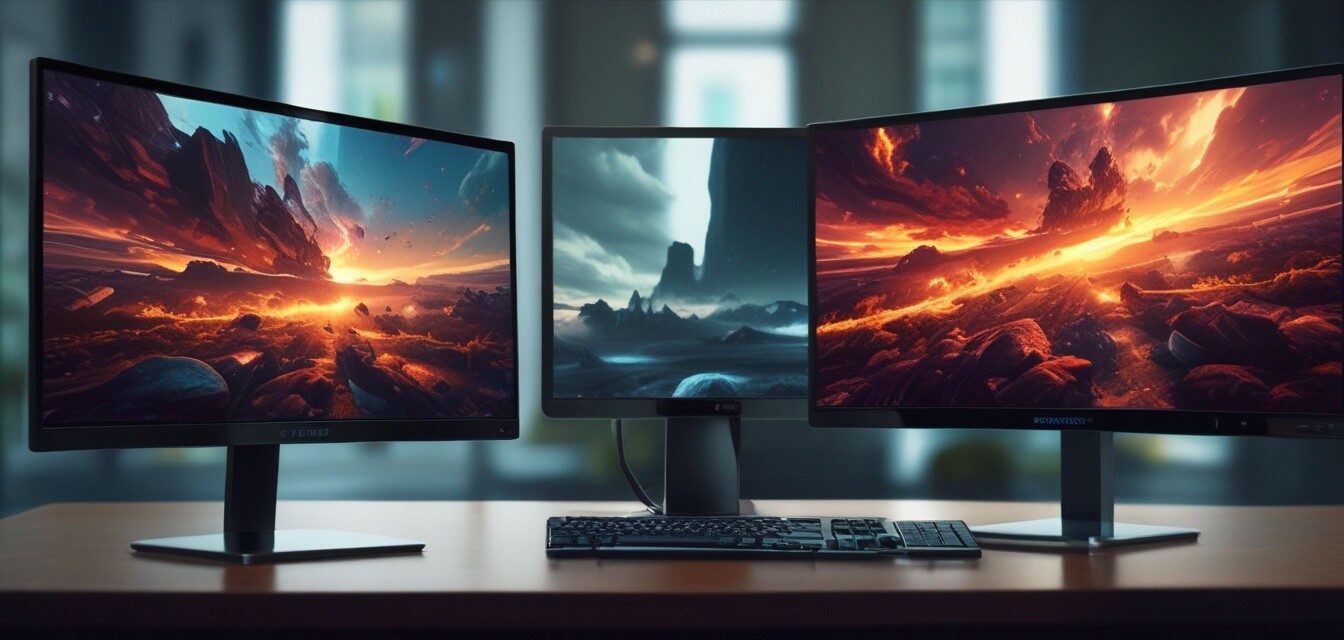
Comparing OLED Monitors vs. Traditional LCD Monitors for Gaming
Key Takeaways
- OLED monitors offer superior color accuracy and contrast compared to traditional LCD monitors.
- Response times are faster in OLED monitors, enhancing the gaming experience.
- Traditional LCD monitors can be more budget-friendly and less prone to burn-in issues.
- Consider your gaming style and environment when choosing between OLED and LCD.
- The lifespan and durability between the two can vary; OLEDs may require more careful handling.
When it comes to gaming monitors, the choice between OLED and traditional LCD displays can significantly impact your gaming experience. Each technology offers unique advantages and disadvantages that cater to different gaming styles and preferences. In this article, we will delve into these differences, providing you with a comprehensive comparison to help you make the best decision for your gaming setup.
Understanding OLED and LCD Technologies
Before we dive into the comparison, it’s essential to understand what OLED (Organic Light Emitting Diode) and LCD (Liquid Crystal Display) technologies entail.
What is OLED?
OLED monitors use a unique technology where organic compounds emit light when an electric current is applied. This means that each pixel can turn off completely, resulting in true blacks and a significantly improved contrast ratio.
What is LCD?
LCD monitors utilize a backlight and a liquid crystal layer to produce images. The light shines through the liquid crystals, which can filter light in varying degrees, allowing for the display of diverse colors. However, since the backlight is always on, true blacks cannot be achieved.
Performance Comparison
| Feature | OLED Monitors | LCD Monitors |
|---|---|---|
| Color Accuracy | Superior, with vibrant colors and deep blacks | Good, but limited by backlight |
| Response Times | Faster, leading to smoother gameplay | Slower, which can result in motion blur |
| Viewing Angles | Wide, consistent colors and brightness from various angles | Limited; colors may shift when viewed off-axis |
| Burn-in Risk | Higher risk with static images | No burn-in issues |
| Price | Generally more expensive | More budget-friendly options |
Visual Quality and Gaming Experience
Both OLED and LCD monitors can provide high-quality images, but they excel in different areas:
- OLED: Offers the best in color quality and contrast, which can enhance the gaming atmosphere, particularly in dark scenes.
- LCD: While they may not achieve the same contrast, they provide stable performance and can handle bright environments well.
Durability and Lifespan
The longevity of a monitor is an essential consideration. OLED monitors may be more prone to burn-in, especially with static UI elements like health bars or maps. On the other hand, LCD monitors typically resist this issue but may degrade in brightness over time more rapidly than OLEDs.
Which is More Suitable for Gaming?
Your choice should depend on various factors, including:
- Gaming Style: If you're an immersion-focused gamer who enjoys rich visuals, OLED may be the better option.
- Budget: If you're on a tighter budget but still want solid performance, consider traditional LCD monitors.
- Environment: Think about your gaming setup; if you typically play in bright rooms or share the screen with multiple viewers, LCD might be more suitable.
Conclusion
In conclusion, both OLED and traditional LCD monitors have unique strengths that cater to different gaming preferences. If you prioritize color accuracy, fast response times, and immersive gaming experiences, OLED might be the way to go. However, if you're on a budget or require a monitor that handles consistent performance without burn-in risk, then traditional LCD monitors are an excellent option.
Pros of OLED Monitors
- Exceptional color accuracy and contrast
- Faster response times, ideal for fast-paced gaming
- Wide viewing angles without color distortion
Cons of OLED Monitors
- Higher cost than traditional LCD monitors
- Risk of burn-in with static images
Beginners’ Tips on Choosing a Gaming Monitor
- Research specs that suit your gaming preferences, such as resolution and refresh rate.
- Consider reviews and comparisons to weigh the benefits of each monitor type.
- Think about your gaming environment to ensure optimal performance.
Explore our 4K OLED gaming monitors and budget-friendly options for more insights. Additionally, check out our buying guides for a deeper understanding of what features to prioritize.